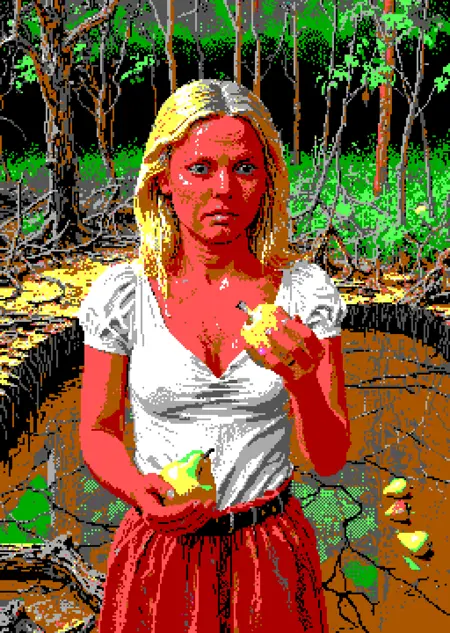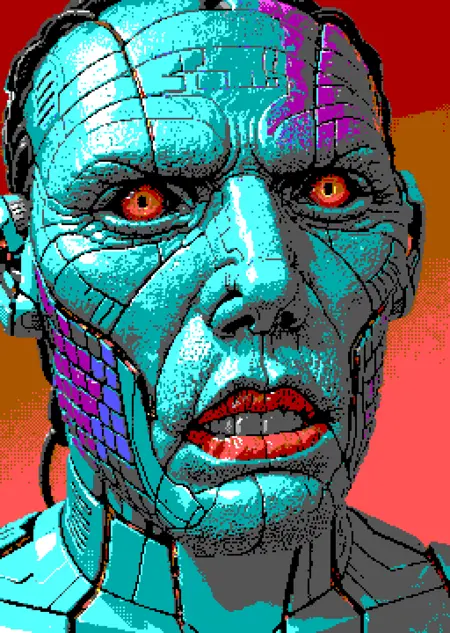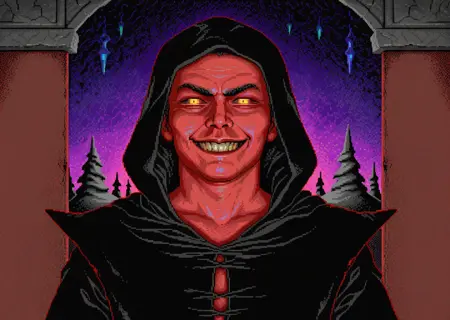DOS EGA Style
Details
Download Files
About this version
Model description
V2 Notes
This was even more of a nightmare to train (I probably have about ten intermediate experiments of varying success) but it's a lot more consistent now. Incidentally, I ended up writing my own tag manager just to deal with the frustration of tagging. Some random notes:
I removed all the adventure game pictures with player sprites in it, as I noticed it was enjoying making teeny tiny people way too much, so all landscape pictures are just landscapes
Added more varied sources beyond just Sierra and LucasArts games but which keep to a similar artistic style
Removed a lot of highly dithered images (looking at you, KQ1 EGA remake) as I think that confused the training
All images were normalised to 1280x768 (due to bucketing, not 1280x800) which is not perfect but is good enough and has made the pixels a little more pronounced
Fixed a few images that had slightly colour-shifted EGA palettes so all images use the correct CGA/EGA 16 colour palette now
All images are 400% scaled, so there's no weird variations
Although I love some of the LSL3 character close-ups, some use things like yellow/purple dithering to make "nicer" skin tones, and I think that was fighting the "red" skin, so I removed them from the set
I removed "red skin" and "colored skin" from the pictures of characters with red coloured skin, so it's more consistent in making characters with that reddish skin.
Checkpoints are quite sensitive with this LoRA. If one checkpoint isn't doing too well, try another. Heavily anime-ish checkpoints tend to towards more "washed out" pastel colours, pixel art-tuned checkpoints tend to impose their own style and usually with "chunkier" resolution. Oddly, many realism-based checkpoints do well presumably due to the higher contrast that gets mapped - though not too realistic or you'll get lobster-people.
Quality prompts (both positive and negative) might or might not be important. Try it with some and also without. You'll need to experiment with this one to find what works.
Bonus: Recommended is the "SD-Palettize" script extension. Some of the gallery pictures used this script to force the render into accurate colouring. Settings: make a CGA/EGA palette for it, then set 16 colours, scale to 4 (due to it being 400% scaled pixels), and add Bayer 2x2 with a setting of maybe 2 or 3.
V1 Notes
Training this was really hard. It's far from reliable. The trigger is a bit fussy. Sometimes pixel art helps, other times not. You'll need to experiment. I can recommend red skin if you want a delightful skin tone.
Finding good 16 colour EGA art took a lot of scouring and extracting art from old DOS games. I think that the pixel art gets scaled into buckets at too many slightly different sizes, and so it doesn't "see" dithered colours as consistently placed or distinct, instead blending them into what we perceive the dithering as. However, you can get sort-of approximations of EGA style, in that it gets the general broad strokes mostly right, like a faded memory of the 1980s. I guess that's appropriate. The digital artists of the era were true magicians who managed to make these terrible colours look like anything other than the choices an electrical engineer would pick. As are the modern day retro artists who willingly choose to work with this abominable scheme.
I feel if this Lora was burned for a lot longer, and I fiddled with the training images more, and figured out how to better fit the pixels to the bucketing sizes so that the scaling was consistent across buckets... it might be a little better. But that sounds like work. Combining it with a pixel art Lora or checkpoint may yield useful results... or not.
Random aside
Technically this is the CGA 16 colour set, though I'd guess most people old enough to remember would associate CGA with its set of even-more-restrictive four colour palettes. It wasn't until (expensive!) EGA cards came out that all 16 CGA colours could be used in 320x200 mode. From what I understand, EGA technically could pick 16 colours from a palette of 64, but only at 640x350 resolution. 320x200 used the CGA-compatible colour palette because of monitor signalling. EGA cards were also kind of slow. Somewhat ironically, it wasn't until VGA that what we know of as EGA style became both affordable and commonplace, making it fairly short-lived.









